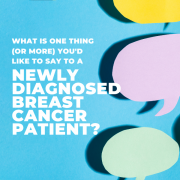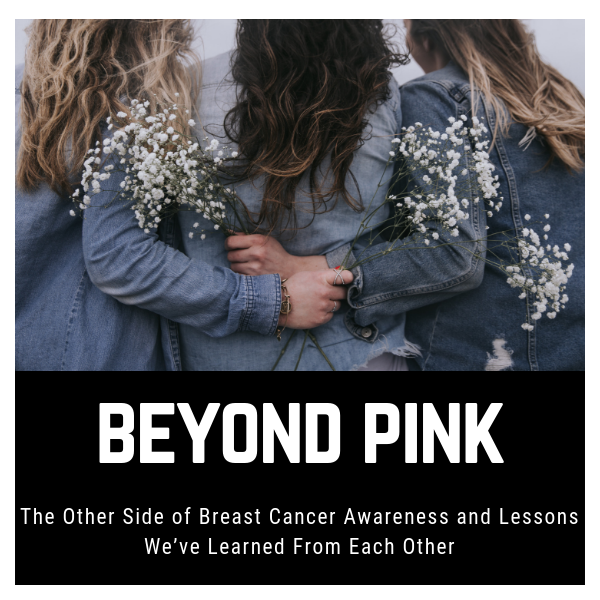Beating Burnout: Self-Care Strategies for Patient Advocates
As patient advocates we are highly motivated to make things better for others. Our commitment and passion for the work we do can lead us to take on more activities with ever-increasing demands on our time and energy. All of this we do willingly, but this work doesn’t happen without a degree of personal cost. “If we are living with the condition, it is personal beyond measure,” writes diabetes advocate Renza Scibilia. “If we are caring for someone and advocating for them, there is a different sense of pressure and investment. And if we decide that this is ‘a calling’ and do it professionally, there is a difference again as we try to work within different parameters – the need to keep within the realms of what our work allows, and the less structured realities of actually living with a health condition.”
Commenting on the nature of patient advocacy, therapist Karin Sieger [1] points out, “this area can be heightened with emotions because lives can depend on it and often advocates themselves are directly or indirectly affected by patient care aspects or illness they are advocating for. It stands to reason that those involved in advocacy will be at the receiving end of emotional, mental and physically draining activities.” Given this fact, it’s not uncommon to experience symptoms of burnout the longer we work in the field of advocacy.
“This is a real thing,” says patient leader and two-time cancer survivor, Shari Berman [2]. “Working without pay but as a patient leader is recipe for burnout especially when you feel like the needle isn’t moving.” As metastatic breast cancer patient and advocate, Julia Maues [3] says, “Oh the burnout is so real and so unique. For once, many of us have the same illness as the people we are advocating for. It’s like advocating for better lives for prisoners while being in jail ourselves.”
What Is Burnout?
Burnout is a state of chronic stress which occurs when we’ve taken on too much and in the words of Sieger, “overstepped our coping threshold.” Scibilia describes how she has “found myself at that breaking point on more than one occasion when the system is failing me, and equally, when I see it failing others and I can’t help.”
One of the lesser acknowledged contributing factors to burnout, particularly in the field of cancer advocacy, is the emotional toll of losing friends to the disease. As Susan Zager, founder of the non-profit organization, Advocates for Breast Cancer (A4BC) [4] describes, “the biggest factor that’s caused me burnout is the intense loss and grief of losing so many friends and family to this terrible disease.” Research advocate, AnneMarie Ciccarella [5] agrees. “I had to force myself to take a step back from actively supporting individual people in favor of more research advocacy because the losses became unbearable,” she explains. “There are times I’ll look at a particular blog post and start crying when I read the comments. I see comments from so many who are now gone and it’s heartbreaking.”
Pamela Katz Ressler, founder of Stress Resources [6], draws a distinction between burnout and compassion fatigue which can co-exist with burn-out. “Compassion fatigue is generally rapid onset and often is the result of exposure to extreme suffering or witnessing traumatic events and situations,” she explains. “It can be one event or a cumulative exposure. Burnout can be described as emotional (and physical) exhaustion leading to withdrawal and disconnection from activities that once were meaningful. As advocates, we often expend energy, caring, and empathy as if it comes from a bottomless well.”
Spotting the Signs of Burnout
Burnout doesn’t happen suddenly. It creeps up on us over time, but our bodies and minds do give us warning signs. Symptoms can include physical and emotional exhaustion; impaired concentration; increased irritability or feelings of apathy, detachment or cynicism related to the work you are doing. In the words of Scibilia, “I get tired. I get overwhelmed. I get discouraged. I get disengaged. I get disheartened.
Looking at some of the common factors related to burnout, Sieger points to:
- An inability to say ‘no’.
- The fear of putting our needs first and in doing so letting others down.
- Taking on too much because we want to please, need to control, cannot delegate, want to micro-manage, cannot trust anyone else to do things for or with us, or have no-one to share responsibilities with.
- We are not sufficiently in touch with our bodies, minds, or emotions to see the tell-tale signs.
- We think it is a sign of strength and authority to be able to take on more and more.
- We are afraid of becoming replaceable.
- We find it difficult to accept, that we can no longer take on as much as before.
If you recognize your own tendency towards any of these factors, you may be at risk of burnout. Katz Ressler advises that “the first step in preventing burnout and compassion fatigue is awareness and recognition that the well of empathy, energy and caring needs to continually be refilled.” The following self-care strategies and tips can help you, in the words of Katz Ressler, “refill the well of empathy to maintain your ability to advocate effectively.”
14 Self-Care Strategies to Address Burnout
“Different people have different ways that work well for them, says Sieger. “Self-care, keeping health boundaries, a healthy diet, limited stress, moderate exercise, sufficient sleep and quiet down-time are the essentials.”
Let’s take a deeper dive into these essential strategies and add a few more to our self-care toolkit.
1. Set realistic expectations. Patient advocate, Liza Bernstein [7], believes a key element in managing burnout is to set realistic expectations. “One key to mitigating patient advocacy burnout is to recognize our role and agency in trying to manage it,” she says. “It is not easy, once you’re diagnosed with and treated for cancer to reconcile your new physical and emotional reality with the non-cancer person you used to be. So we have unrealistic expectations.” Bernstein describes her “burnout prevention strategy” at the 2018 San Antonio Breast Cancer Symposium. “It was a few months after a surgery and I wasn’t yet 100%,” she explains. “So I gave myself ‘The Talk’ and granted myself permission to do ‘as little as possible’ there; e., I paced myself, took breaks, and didn’t burden myself with ableist expectations. I did more tangible things tuning out the presentation & DM’ing people in my network to connect a distressed newly diagnosed person with a second opinion appointment. Seems like small thing but had big impact!”
2. Take breaks between big projects. Try to avoid jumping from one time-consuming project to the next in order to give your mind and body a chance to recover. “When projects turn into being a tedious chore, that’s a big sign of burn out,” says patient advocate Mary Pettigrew [8], who advises, “make it a habit to purge the unfulfilling, stressful activities, keep those of value and explore new territory/opportunities.”
3. Learn to prioritize. Ovarian cancer advocate, Dee Sparacio, wrote on her blog [9] about taking a step back from her heavy work-load of advocacy activities to focus on her priorities. She outlined a list of questions to help her decide which activities to prioritize:
- How effective am I at doing that work?
- Am I the only one doing that work?
- If I am the only one can another advocate/person do it?
- How much does the work benefit other survivors/patients?
- How many people are effected by the work I do?
- Do I ever regret having agreed to do the work and feel that way when I am doing it?
- Does the work ever prevent me from doing other things – like hang out with my husband, grandkids, or dog?
- Does that work bring me joy?
Remember, to quote Stage 4 melanoma patient, Kay Curtin [10], “it’s very easy to get caught up trying to fix everyone’ else’s priorities.” These questions can act as a helpful guide when it comes to reassessing your own priorities and what matters to you.
4. Say no. Self-care may involve you saying no more often, which, if you are like me, you might find challenging. There are always new opportunities or requests for your time, but an important element of self-care is the ability to pace yourself. Before you say yes to the next request, look at the time and energy you have in a realistic way. Follow Sparacio’s advice “I review my advocacy work and its impact once a year. I keep what brings me joy -not necessarily that which brings me exposure. The hard thing is learning to say no. If I say no I will provide the name of a new advocate voice. We need to cultivate new voices.”
5. Schedule time for yourself each day. “Schedule time to step away from ‘doing’ and shift to ‘being’. Take five minutes to turn off your phone, notice your breath and release muscle tension in your body,” recommends Katz Ressler. “I’ll hit the beach collecting shells to clear my head, but a simple walk around the block is helpful too,” says Ciccarella, “and when I have nothing left, I give myself permission to hit the sofa and turn on mindless, silly television.”
6. Feed your fighting spirit. Registered dietitian and founder of “Dam. Mad. About Breast Cancer”[11], Cathy Leman reminds us of the importance of good nutrition in maintaining a healthy balance. “Balanced blood sugar for sustained energy and optimizing your immune system so you stay well are just two benefits of nourishing your body with quality meals and snacks,” she says. “Dried, fresh and frozen fruit, nuts, pre-washed and bagged veggies, whole grains and good olive oils and flavored vinegars can help you pull meals and snacks together quickly and easily.”
7. Control your devices. iPads, computers, and smartphones are essential tools in the patient advocate’s toolkit, but they can consume large amounts of your time and energy. Get in the habit of turning them off as much as possible, particularly before you go to bed at night.
8. Slumber your way to good health. “With all you have to get done, getting adequate sleep may fall to the bottom of your list,” says Leman “But when you don’t get the sleep your body needs (and deserves!), your overall performance suffers.” A good morning, she advises always begins the night before. “Create an evening ‘sleep hygiene’ routine that signals to your brain and body you’re ready to call it a day. When you’re well rested, you’ll have more patience, clarity of thought and focus to do your important work. And as a bonus? Getting enough sleep helps you make healthier food choices, which supports good health all the way around.”
9. Exercise your body’s need to move. “You need mental clarity, focus and stamina, and regular exercise is a simple way to tap those reserves,” advises Leman. “Even a 10 minute walk can clear brain fog, deliver nutrients and oxygen to every cell in your body, and build physical endurance for the long haul. Combine strength training, cardiovascular, core, flexibility and balance exercises as often as possible for a well-rounded fitness routine that will keep you moving forward.”
10. Take time for reflection. Taking time, whether it’s sitting quietly on your own, journaling, or speaking with a friend or therapist to reflect on what’s going on for you is important. “It’s important for all of us in this space to pause, assess, and take whatever time we need to reboot,” advises Ciccarella, for whom writing is “a powerful outlet to deal with all of my feelings. Identifying my feelings and their underlying cause allows me to accept the feeling and FEEL it – whether it’s fear, anger, grief -really, any emotion that drags me down.”
11. Don’t go it alone. Whether it’s peer support, or a professional, find a group or an individual who can support you on this journey. “I would even go as far as saying that having another independent professional to support us is essential,” suggests Sieger, “like supervision for therapists and counsellors, where we can talk things over, an outlet for our pressure and feelings.”
12. Intentionally step away from your “tribe” for short periods of time to refill your reserves, advises Katz Ressler. “Detribe” is a term she coined a number of years ago that may seem counterintuitive. As she explains it: “How can we step away from our ‘tribe’ when there is so much to do? Research shows that by intentionally engaging in self-care activities (think meditation, a walk in nature, a cup of tea with a friend) burnout can be reduced or eliminated.”
13. Choose what works for you. “You have to find what works for you,” says Bernstein. “It might not be a massage/spa, it might be doing what you love, giving back, being in nature, taking a nap, patting your dog… it really means being compassionate to you, as if you were your best friend.” Katz Ressler echoes this and advocates practising a spirit of loving-kindness. “Allow yourself to be as kind and empathic to yourself as you are to others. What ‘gift’ would you give someone else to show they are appreciated? Give the same gift to yourself,” she says.
14. Knowing when it’s time to quit. Sometimes the best self-care is to quit. Sue Robins [12] took the decision to do just that. “I still do advocacy but on my own terms, through writing and storytelling and with individuals. I handled my burnout by quitting the ‘patient engagement’ world.”
Take-home message
“Burnout in patient advocacy is real,” says Terri Coutee, founder of DiepCFoundation.org [13]. “It takes a tremendous amount of dedication and discipline with the potential of draining your personal emotional and physical energy.” But the good news is that burnout is reversible. By putting the focus back on self-care, you can learn to manage your energy, time, and personal resources better. Although, this too takes self-discipline. “I think it takes discipline (ie, effort) for many of us to remind ourselves we need to practice self-care regularly,” notes Bernstein. As Coutee explains, “choosing the gym, saying no, and letting others take care of themselves are among the many actions requiring discipline. Choose the one that works for you so you can continue the work of patient advocacy with passion without burning out.”
Whichever path to self-care you choose, once burnout is recognized and attended to, it can become a chance to rediscover your commitment to the important work you do as advocates for better care for yourself, your loved ones and your community. Let these tips and techniques be a reminder that YOU are most deserving of the gift of self-care.
Resource Links:
[1] Karin Sieger
[2] Shari Berman
[3] Julia Maues
[4] Advocates for Breast Cancer
[6] Stress Resources
[7] Liza Bernstein
[8] Mary Pettigrew
[9] Dee’s blog
[10] Kay Curtin
[11] Dam. Mad. About Breast Cancer
[12] Sue Robins
[13] DiepCFoundation.org

A Stanford Medicine X e-Patient scholar, Marie Ennis O’Connor is an internationally recognized keynote speaker, writer, and consultant on global trends in patient engagement, digital health and participatory medicine. Marie’s work is informed by her passion for embedding the patient voice at the heart of healthcare values. She writes about the experience of transitioning from breast cancer patient to advocate on her award-winning blog Journeying Beyond Breast Cancer.










